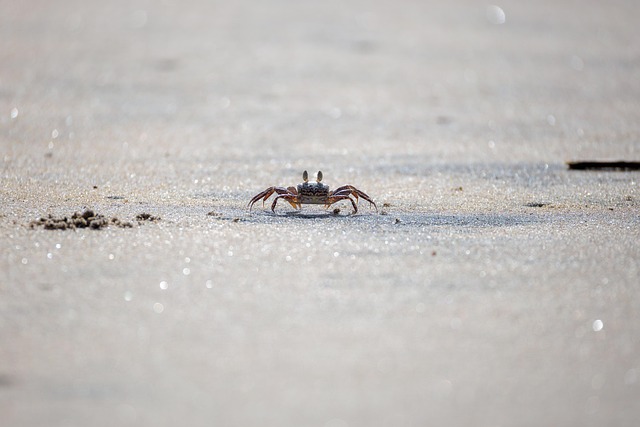The natural world is a delicate web of interdependent species, each playing a vital role in maintaining the balance of their ecosystems. Among these species, crabs have a unique place in marine environments, contributing to the health of coastal ecosystems and serving as an essential food source for various predators. However, as climate change accelerates, our oceans are undergoing significant transformations that threaten the very habitats crabs depend on.
As temperatures rise, the consequences of climate change become increasingly pronounced. Ocean warming leads to fluctuations in crab populations, affecting their migration patterns, breeding cycles, and overall health. Crabs are particularly sensitive to changes in temperature; even a slight increase can disrupt their physiology and reproductive capabilities. In regions where crabs are a critical component of the ecosystem, the ripple effects can be devastating.
The melting of polar ice caps is another severe consequence of climate change that impacts crab habitats. As ice melts, it alters salinity levels and disrupts the delicate balance of marine environments. For many crab species, particularly those residing in colder waters, these changes can lead to diminished populations and even local extinctions. The loss of ice also affects the availability of nutrients that drift to deeper waters, impacting the entire food chain and subsequently reducing the availability of crabs and other marine life.
Moreover, changes in ocean acidity due to increased carbon dioxide levels pose a serious threat to crabs. The rising acidity impacts shell formation, making it difficult for juvenile crabs to develop and survive. As these young crabs struggle to thrive, the long-term consequences could mean a significant decline in crab populations, thus altering the marine ecosystem and affecting the communities that rely on crabs for their livelihoods.
While crabs might not be the first species that come to mind when discussing climate change, the degradation of their habitats serves as a stark reminder of the interconnectedness of life on Earth. Crabs are indicators of environmental health, and their declining populations signal broader ecological issues that need immediate attention. As we witness these changes unfold, it’s essential to remember that the health of our oceans and the species that inhabit them is intrinsically linked to our actions.
It’s time for us to take action. Whether through supporting sustainable fishing practices, reducing pollution, or advocating for policies aimed at combating climate change, every effort counts. By making informed decisions, raising awareness, and fostering community initiatives, we can contribute to protecting crab habitats and preserving the delicate balance of marine ecosystems. The fight against climate change is not just a battle for the polar bears or the corals, but for all species, including the humble crab, whose fate reflects the health of our planet.



